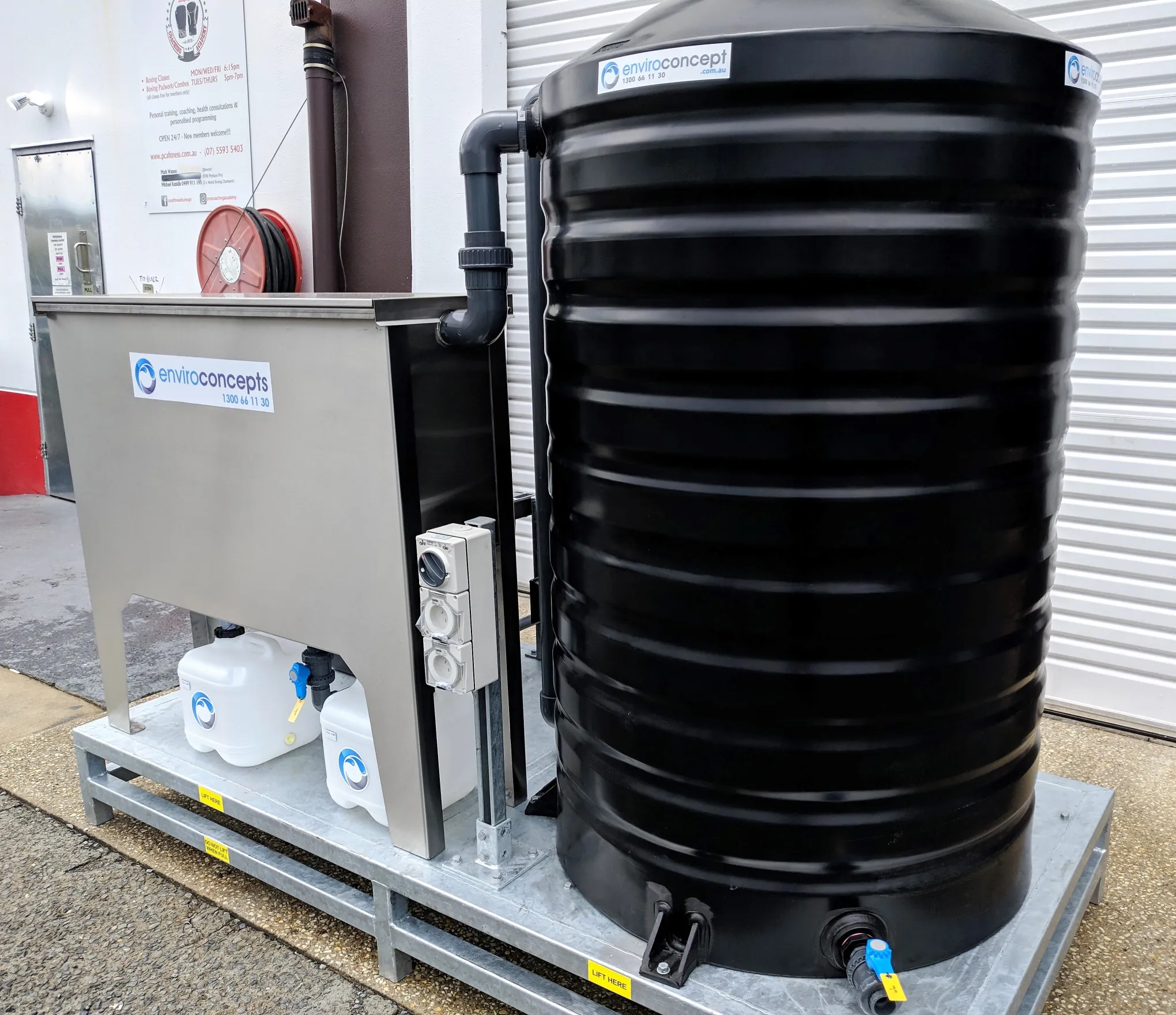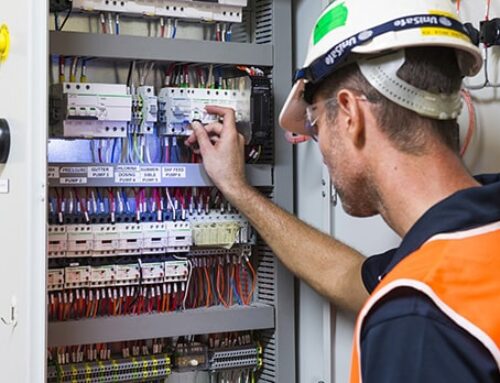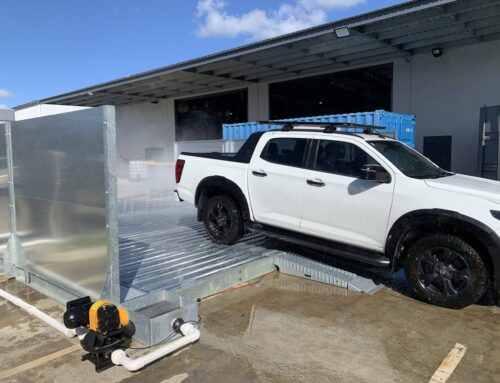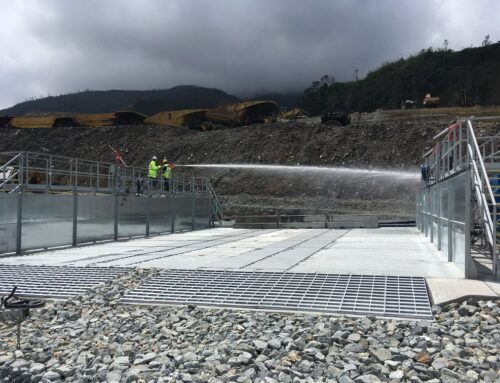Oil and Fuel Spills: The Real Cost to Your Site and Business
Oil and fuel spills are not just a nuisance—they pose significant operational, financial, and regulatory risks. From mining workshops to automotive depots and construction sites to vehicle washing facilities, failing to contain a spill in wash bays can trigger massive penalties, remediation costs, and project delays. In Australia, non-compliance with water authority discharge regulations can result in fines exceeding $100,000.
Spills in wash bays can contaminate stormwater systems, damage holding tanks, and jeopardize long-term site integrity, causing permanent damage. In addition to breaching local authority requirements, they may also disrupt site operations and damage relationships with local residents.
Common consequences of uncontained spills include:
- Costly site shutdowns, from mining to construction, for clean-up and compliance audits
- Damage to infrastructure, including bunding, wash bay floor, recycling and treatment systems
- Environmental investigations from breaches in trade waste discharge standards
- Water pollution that results in negative publicity and permanent brand damage
The solution lies in engineered systems designed to contain, treat, and prevent oil, fuel, and wastewater from leaving wash bays in the first place.
How to Prevent Spills in Your Wash Bay (Before It’s Too Late)
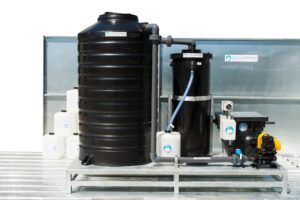
The most effective approach to stopping spills is prevention. Effective wash bay designs incorporate systems that isolate wash water, separate contaminants, and enable compliant wastewater discharge or recycling. This begins with understanding the exact needs of your operation, from vehicle types to volume and frequency of washing.
Key design features that reduce risk include:
- Bunded wash bay pads to contain overspray and leaks
- Oil water separators to remove hydrocarbons before wash water or wastewater is released
- Flush diversion systems to distinguish wash down water from stormwater
- Grated silt traps and pits to intercept solids
- Holding tanks with sufficient capacity for peak operations
When properly configured, these systems ensure that even during high-pressure vehicle washing or equipment cleaning, water is managed correctly, and no unfiltered waste enters the drainage system from wash bays.
Don’t wait until a spill disrupts your operations or results in hefty fines. Contact EnviroConcepts today to discuss customised portable wash bay solutions that meet regulatory requirements and protect your business from unnecessary risks.
Best Spill Containment Equipment for Wash Bays: What Works
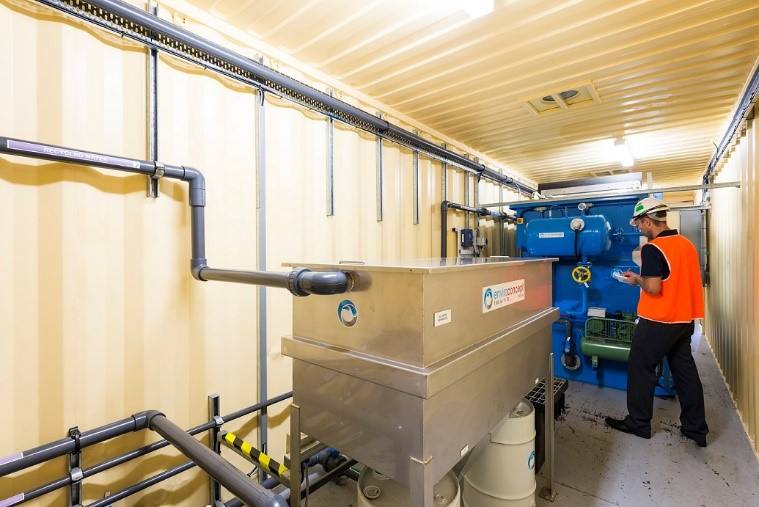
The right equipment transforms a potential liability into a compliant, efficient operation. Businesses across industries like mining and construction require tailored systems that reflect their site layout, application, and wash water volume. The following are some of the most effective containment tools.
| Equipment | Use Case | Features |
| Portable wash bay systems | Mobile operations and remote sites | Modular, fast setup, compliant, reusable |
| Oil water separators | All vehicle and equipment wash areas | Removes oil and fuel to required discharge levels |
| Bunded floor systems | Workshops and heavy equipment yards | Structural integrity, prevents runoff |
| Flush diversion system | Unroofed wash bays | Differentiates washdown and stormwater flows |
| Silt traps and drainage pits | Construction and mining environments | Pre-treatment, removes heavy solids |
Every solution must be installed and maintained to suit specific needs. Generic solutions often lead to inefficiencies, poor separation, and eventual compliance issues.
Inspections, Maintenance & Leak Prevention: Your Wash Bay Checklist
To maintain performance and compliance, every wash bay system, whether permanent or portable, requires structured inspection and servicing. A comprehensive maintenance schedule minimizes the risk of spills and keeps water treatment systems running efficiently.
Weekly Tasks:
- Inspect bunding for wear or cracking
- Clean grates, pits, and screens
- Check oil separator function
- Confirm bunded areas are free of buildup
Monthly Tasks:
- Test flush diversion system function
- Inspect holding tanks for sediment
- Ensure water recycling systems are working
- Monitor discharge points for clarity and flow
Preventative maintenance is essential. Unnoticed leaks or blockages can lead to gradual contamination and eventual system failure.
Training for Wash Bay Spill Response: What Your Team Must Know
Even the best equipment cannot prevent every spill. That’s why wash bay teams must be trained in rapid identification, containment, and clean-up procedures. Proper training reduces the severity of incidents and helps keep operations compliant with water authority expectations.
Training should cover:
- How to identify different types of spills
- Correct deployment of spill containment kits
- Safe handling and disposal of collected waste
- Use of bunds, booms, and portable containment barriers
- When and how to contact and escalate to environmental authorities
Well-trained teams act quickly and correctly, turning what could be a major incident into a minor event.
Drainage and Separation Systems That Stop Spills in Their Tracks
Drainage is one of the most critical aspects of any wash bay. Without the right systems or solutions in place, even small spills can spread beyond designated wash areas. That’s why separation systems must be integrated directly into the drainage line.
Key components include:
- Silt traps to collect solids from wastewater before they enter the treatment line
- Oil water separators that reduce hydrocarbons to compliant levels
- Grated and bunded drain systems to manage directional flow
- Holding tanks to buffer surge volumes and allow settling
- Inline filters and screens to protect pumps and downstream systems
Every discharge point should be verified against local authority regulations to ensure the site is fully compliant.
Wash Bay Spill? Follow This 5-Step Emergency Response Plan
Should a spill occur, having a predefined emergency plan is vital. This structured approach helps teams act quickly and decisively, limiting environmental damage and regulatory exposure.
Step 1: Isolate the source
Stop the equipment or activity causing the spill immediately.
Step 2: Contain the spill
Deploy bunding, drain covers, or temporary barriers to prevent spread.
Step 3: Deploy spill kits
Use absorbents or vacuums to remove liquid waste from the wash bay floor.
Step 4: Dispose of contaminated materials
Place used absorbents and oily water into approved waste containers for proper disposal.
Step 5: Report and review
Log the incident, alert relevant managers, and review how to prevent recurrence.
Quick action can mean the difference between a controlled incident and a reportable environmental violation.
Wash Bay Compliance: Avoiding Fines, Shutdowns, and Environmental Damage
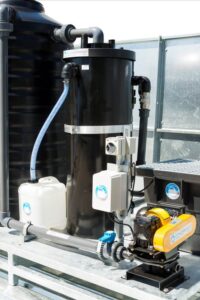
Compliance is not a one-time goal—it’s an ongoing operational requirement. Water treatment systems, wash bay components, and staff protocols must align with the standards set by local authorities, trade waste permits, and national environmental guidelines.
Non-compliance leads to:
- Fines
- Project delays
- Increased scrutiny from regulators
- Potential damage to commercial contracts
Key to staying compliant:
- Use certified oil water separators and discharge control equipment
- Maintain flush diversion system records and inspection logs
- Train all users in correct washing and spill response procedures
- Choose Australian-made solutions designed for local regulations
- Monitor discharge volume and quality regularly
Wash bays, whether permanent or portable, are essential for modern industrial and automotive operations—but only when designed, installed, and maintained correctly.
3-Step Spill Prevention Process
- Assess your site: Review space, usage, water load, and compliance requirements
- Design your system: Choose modular wash bays with bunding, tanks, and separators
- Implement and maintain: Install, train staff, and establish regular servicing
Take Control of Compliance with Tailored Spill Solutions
To ensure your operations remain compliant, efficient, and environmentally responsible, EnviroConcepts offers a wide range of portable wash bay solutions, wash bay equipment, spill containment solutions, and water recycling systems—all engineered in Australia and backed by expert support. Whether you need a portable wash bay for vehicle or equipment washing, advanced oil water separator, or tailored wastewater treatment solution, we can help design a system that fits your exact requirements. Contact our team today to explore options and get a free quote.

